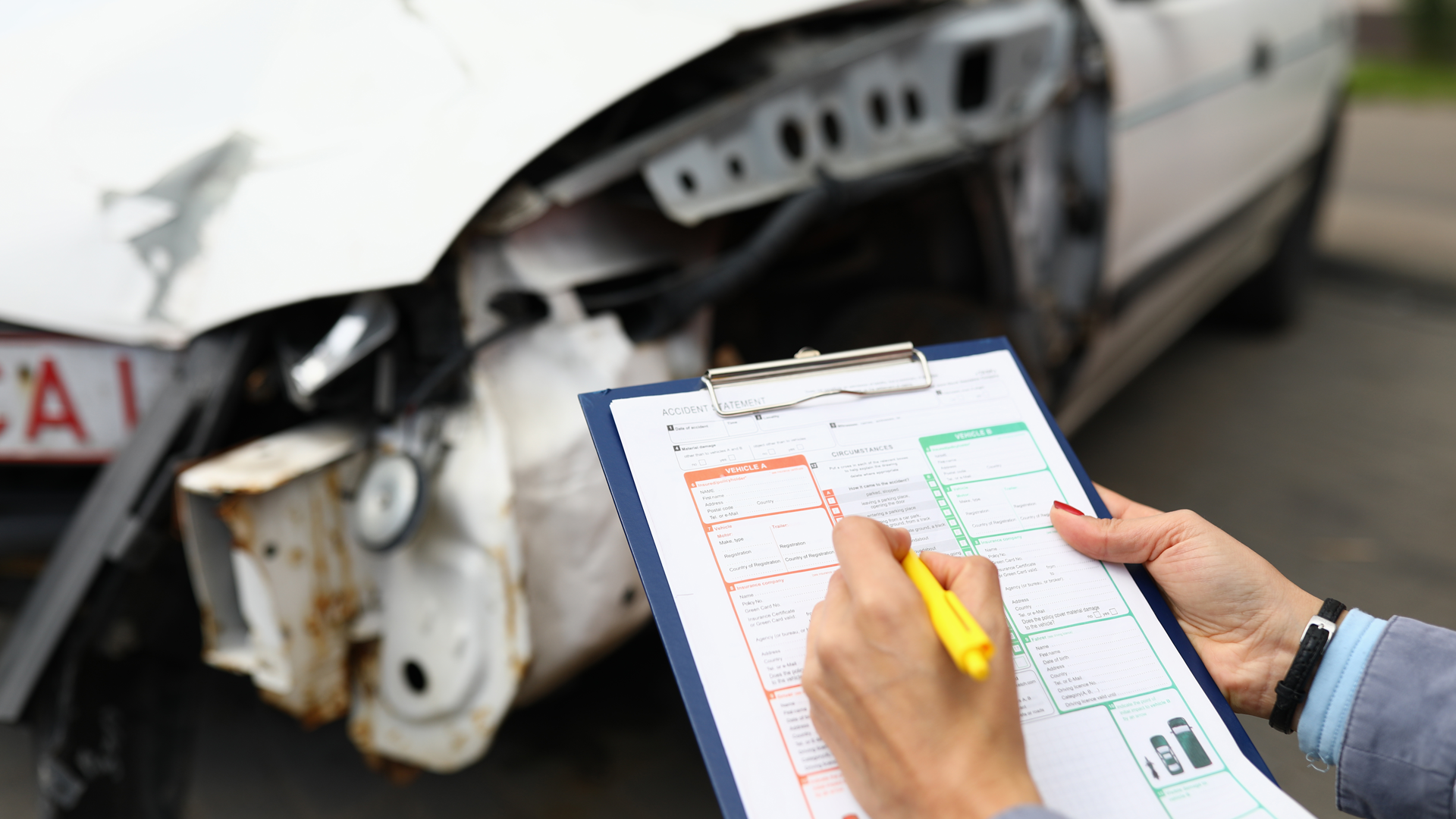

In today’s fast-paced world, the automotive industry is continuously evolving to provide efficient and seamless services. One area that has seen significant advancements is the process of quoting for auto physical damage. Traditionally, this task relied heavily on manual evaluation and estimation, leading to delays and potential inaccuracies. However, with the advent of automated quoting systems, the landscape has changed, revolutionizing the way damage assessment and repair costs are determined.

The process of quoting for auto physical damage involves evaluating the extent of damage to a vehicle and estimating the cost of repairs. This task is crucial for insurance companies, repair shops, and vehicle owners alike, as it directly affects the efficiency of claims processing and the overall customer experience. Automated quoting systems leverage the power of technology, including artificial intelligence and machine learning algorithms, to streamline and enhance this process.
Automated quoting for auto physical damage refers to the use of software systems that automate the evaluation and estimation of repair costs. These systems analyze various factors such as the type and severity of damage, parts pricing, labor costs, and repair time to provide an accurate and instant quote. By eliminating the need for manual evaluation, automated quoting ensures faster turnaround times and reduces the potential for human errors.
One of the primary benefits of automated quoting systems is the significant improvement in efficiency and time savings. With manual evaluation, the process can be time-consuming, requiring detailed inspections and consultations. However, automated systems can quickly analyze the data and provide accurate quotes within minutes. This expedites the claims process, enabling faster repairs and minimizing downtime for vehicle owners.
Automated quoting systems offer a higher level of accuracy and consistency compared to manual methods. These systems are designed to analyze vast amounts of data, including historical repair records, parts pricing databases, and labor costs. By leveraging machine learning algorithms, they can identify patterns and make precise estimations based on previous repair cases. This ensures that the quotes provided are reliable and consistent.
Automated quoting systems significantly enhance the customer experience by providing quick and transparent cost estimations. Vehicle owners can receive instant quotes, allowing them to make informed decisions about repairs and insurance claims. Moreover, the accuracy and consistency of the quotes build trust between the insurance providers, repair shops, and the customers, leading to improved satisfaction and loyalty.
Automated quoting systems employ advanced technologies to streamline the quoting process. Here’s an overview of how these systems work:
Automated quoting systems integrate various data sources, including vehicle information databases, repair records, parts pricing databases, and labor cost databases. These systems collect and analyze this data to assess the extent of damage and estimate repair costs accurately.
Machine learning and AI algorithms play a crucial role in automated quoting systems. These algorithms learn from historical repair data, patterns, and industry standards to make accurate estimations. They continuously improve their accuracy by adapting to new data and trends in the automotive industry.
Once the data is analyzed, automated quoting systems generate instant quotes. These quotes include detailed breakdowns of the repair costs, parts pricing, labor costs, and estimated repair time. The quotes are tailored to the specific damage and can be adjusted based on the preferences and requirements of insurance providers and repair shops.
Automated quoting systems offer a range of features that facilitate accurate and efficient quoting for auto physical damage. Some of the key features include:
Automated quoting systems utilize vehicle identification numbers (VINs) to access comprehensive information about the vehicle. This includes the make, model, year, and any specific features or modifications. This data helps in accurately assessing the damage and providing precise repair cost estimations.
By analyzing images or descriptions of the damage, automated quoting systems can assess the severity and extent of the physical damage. The systems use computer vision and machine learning algorithms to identify different types of damage, such as dents, scratches, or structural issues. This enables accurate repair cost estimations.
Automated quoting systems integrate with parts databases to determine the pricing and availability of the required components. By considering the specific vehicle model and the location of repair shops, these systems can provide accurate quotes for parts, ensuring transparency and reducing the likelihood of unexpected costs.
Automated quoting systems take into account industry-standard labor costs and repair time for specific types of repairs. By considering the complexity of the damage, the required expertise, and the estimated repair time, these systems can provide accurate labor cost estimations.
Automated quoting systems can seamlessly integrate with insurance providers, enabling streamlined claims processing. By providing accurate and instant quotes, these systems assist in evaluating the costs and coverage associated with auto physical damage. This integration enhances the efficiency of claims handling and ensures a smoother experience for both insurance providers and vehicle owners.
By automating the quoting process, insurance providers can expedite the claims handling process. The accurate and transparent quotes generated by automated systems facilitate faster approvals and enable quicker repairs. This ultimately improves customer satisfaction and loyalty.
Automated quoting systems provide insurance providers with detailed cost breakdowns, allowing them to evaluate the repair costs and determine coverage. By having access to accurate and consistent information, insurance providers can make informed decisions regarding the extent of coverage for auto physical damage claims.
While automated quoting systems offer numerous benefits, there are also challenges and limitations to consider.
Automated systems may face challenges in accurately assessing complex damage scenarios. Certain types of damage may require human expertise to determine the extent and develop a precise repair plan. Therefore, human intervention or verification is sometimes necessary to ensure accurate and reliable quotes.
Automated quoting systems rely solely on data analysis and algorithms, lacking the human expertise and intuition that can be valuable in some repair scenarios. While these systems are continuously improving, there are instances where human professionals may be required to provide additional insights and recommendations.
Automated quoting systems heavily rely on accurate and up-to-date data. Integration issues with databases or inaccuracies in the provided data can impact the accuracy of the quotes. Regular maintenance and data quality checks are crucial to ensuring reliable results.

The future of automated quoting for auto physical damage looks promising, with several advancements on the horizon.
As AI and machine learning technologies continue to evolve, automated quoting systems will become even more accurate and efficient. These advancements will enable systems to learn from real-time data, adapt to changing industry trends, and provide more precise repair cost estimations.
Integration with IoT devices in vehicles will enhance the capabilities of automated quoting systems. Real-time data from sensors and connected devices can provide valuable insights into the extent of damage, enabling more accurate assessments and estimates.
Automated quoting systems will continue to prioritize the customer experience. Integration with user-friendly interfaces, mobile applications, and personalized recommendations will make the quoting process seamless and convenient for vehicle owners.
Automated quoting for auto physical damage has revolutionized the way repair costs are estimated. By leveraging advanced technologies such as AI, machine learning, and data analysis, these systems provide accurate, consistent, and instant quotes. The benefits include improved efficiency, time savings, accuracy, and enhanced customer experiences. While there are challenges and limitations to consider, the future of automated quoting looks promising, with advancements in AI, IoT integration, and an ongoing focus on customer satisfaction.